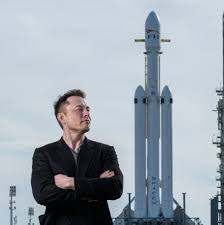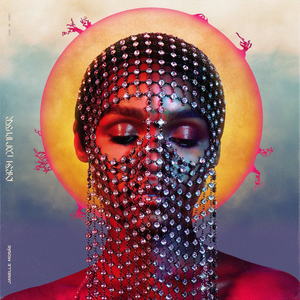By examining examples of cyberpunk media in tandem with modern realities, one might argue that such futures, while exaggerated, are not entirely implausible given the trajectory of late-stage capitalism and America’s ongoing disdain for paying proper wages. In Neuromancer, the Tessier-Ashpool family embodies a fusion of corporate and familial greed, using technology to perpetuate their power across generations. They operate from a space station, isolated from Earth and humanity, while controlling vast resources and exerting influence through their artificial intelligence constructs. This depiction eerily aligns with modern billionaires’ ventures into space, such as Elon Musk’s SpaceX or Jeff Bezos’s Blue Origin. These endeavors showcase an appetite for detachment from the mundane struggles of Earth—be it climate change, labor inequality, or societal unrest—while simultaneously solidifying control over emerging industries.

SpaceX.
The labor dynamics depicted in cyberpunk fiction are also strikingly familiar. In Machinehood, pharmaceutical “pill funders” monetize human productivity and health, illustrating a chilling commodification of labor itself. Today, we see parallels in the gig economy, where workers are treated as disposable units of production rather than humans with needs. Companies like Uber, Amazon, and DoorDash epitomize this trend by leveraging technology to reduce labor costs while maximizing profits. Workers face low pay, minimal benefits, and algorithmic control, echoing cyberpunk’s warnings about technology amplifying exploitation.
But the situation could evolve even further. America’s systemic resistance to adequately compensating labor—rooted in capitalist greed—may push corporations into fully embracing cybernetic systems. Automation and AI are already replacing human labor in manufacturing, logistics, and even customer service. In a future cyberworld, corporations could prioritize the development of cybernetic augmentations, not to enhance humanity but to extract more value from workers. Imagine a scenario where workers are expected to implant productivity-enhancing chips or risk losing their jobs. This is not far removed from Amazon’s current use of surveillance technology to monitor workers’ efficiency. At the same time, these corporate evolutions could lead to deeper societal divisions. While cyberpunk often focuses on elite corporations versus disenfranchised masses, we might see a middle ground emerge: those who can afford limited augmentations to stay competitive in the labor market versus those who cannot. Such disparities would only exacerbate inequalities, reinforcing the capitalist cycle of profit-driven progress at the expense of human welfare.
Ultimately, the evolution of corporations into cyberworld overlords is not just a dystopian fantasy but a critique of our present. It underscores the dangers of unchecked capitalism and the devaluation of human labor. While the predictions of cyberpunk may seem hyperbolic, they serve as a warning: without systemic change, the future could see corporations not just operating in cyberworlds but controlling them, where labor is no longer human and humanity is merely another resource to exploit. By embracing more equitable labor practices and regulating corporate power, society might avert such a future. But until then, cyberpunk remains an uncomfortable mirror, reflecting the potential of capitalism unchecked.




